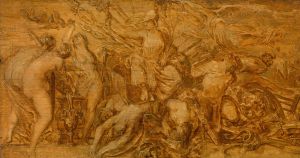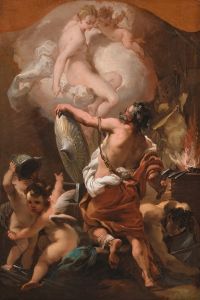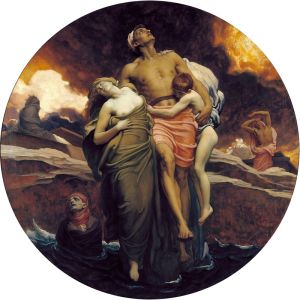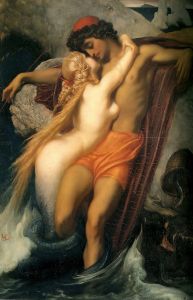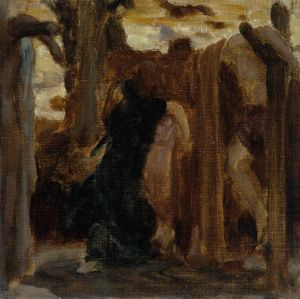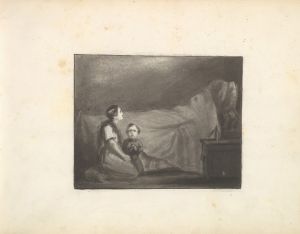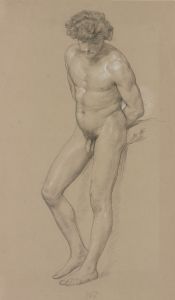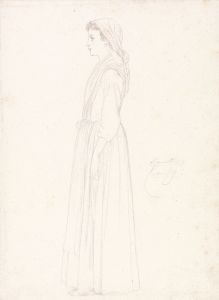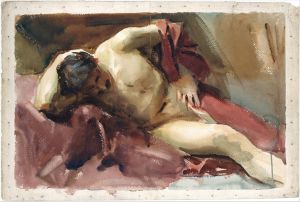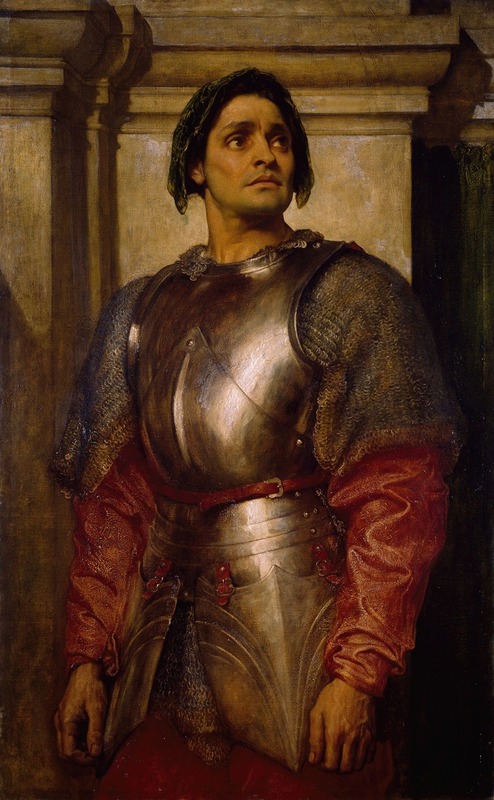
A Condottiere
A hand-painted replica of Frederic Leighton’s masterpiece A Condottiere, meticulously crafted by professional artists to capture the true essence of the original. Each piece is created with museum-quality canvas and rare mineral pigments, carefully painted by experienced artists with delicate brushstrokes and rich, layered colors to perfectly recreate the texture of the original artwork. Unlike machine-printed reproductions, this hand-painted version brings the painting to life, infused with the artist’s emotions and skill in every stroke. Whether for personal collection or home decoration, it instantly elevates the artistic atmosphere of any space.
"A Condottiere" is a painting by the renowned British artist Frederic Leighton, who was a leading figure in the Victorian art world. Leighton, born in 1830, was known for his academic style and his works often depicted classical, historical, and biblical subjects. He was a prominent member of the Royal Academy and served as its president from 1878 until his death in 1896.
The painting "A Condottiere" was completed in 1871. The term "condottiere" refers to the leaders of mercenary soldiers in Renaissance Italy. These figures were often depicted as both heroic and ruthless, embodying the complex political and military landscape of the time. Leighton's choice of subject reflects his interest in historical themes and his ability to capture the essence of a bygone era through his art.
In "A Condottiere," Leighton portrays a solitary figure, dressed in elaborate armor, which is indicative of the Renaissance period. The attention to detail in the armor and the figure's stance suggests a sense of authority and command, typical of a condottiere. The painting is characterized by Leighton's meticulous technique and his use of rich, vibrant colors, which bring a sense of life and realism to the subject.
Leighton's work is often noted for its classical influences, and "A Condottiere" is no exception. The composition of the painting, with its careful balance and harmony, reflects the principles of classical art that Leighton admired and emulated. The figure's pose is both dynamic and poised, capturing the viewer's attention and conveying a sense of strength and determination.
The painting is part of Leighton's broader oeuvre, which includes other notable works such as "Flaming June" and "The Bath of Psyche." His paintings are celebrated for their beauty, technical skill, and the way they encapsulate the ideals of the Victorian era. Leighton's influence on the art world extended beyond his paintings; he was also a mentor to younger artists and played a significant role in the development of the arts in Britain during his lifetime.
"A Condottiere" is housed in the Leighton House Museum in London, which was the artist's former home and studio. The museum is dedicated to preserving and showcasing Leighton's work and offers visitors a glimpse into the life and art of one of Britain's most esteemed painters. The painting remains an important example of Leighton's artistic legacy and continues to be appreciated by art enthusiasts and historians alike.
In summary, "A Condottiere" by Frederic Leighton is a testament to the artist's skill in capturing historical subjects with precision and elegance. The painting reflects Leighton's deep understanding of classical art and his ability to convey complex themes through his work.








